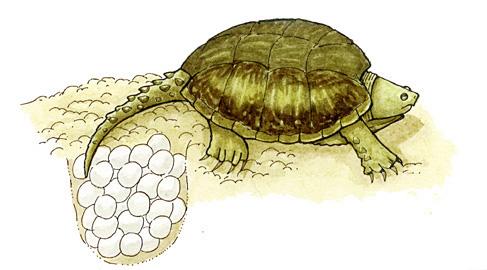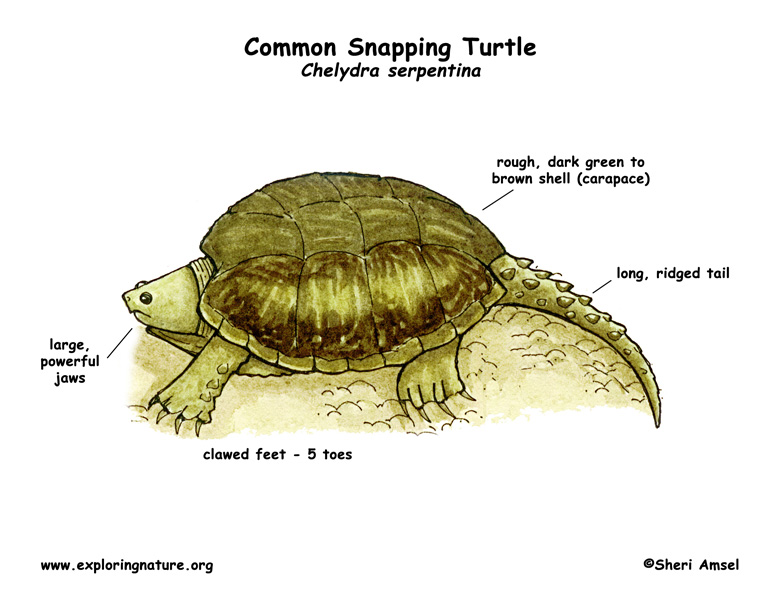

They are found all over the U.S. east of the Rocky Mountains.
They live in the water in freshwater ponds, lakes, wetlands, rivers, streams, ditches and coastal marshes with brackish water (slightly salty).
They are large turtles, growing to 8 – 20 inches long. They have a big head with a long neck they can extend quickly. They have very strong jaws. They have a long, jagged tail. Their large shell varies in color from greenish brown to black.
They are strong and aggressive and do bite when bothered. They will move away from danger, though, if they can. They are solitary animals.
They eat plants and meat (omnivores).
The only predator of an adult snapper is man. Young snapping turtles are preyed upon by any predator in their habitat – including bullfrogs.
Females come out of the pond to find a sandy place to lay eggs. Then she digs out a hole with her back legs and lays 20-60 (sometimes more) eggs in the nest. She then covers it over and goes back to the pond. The eggs hatch in about 2 months, but can take considerably longer depending on the climate of the area.
Snapping turtles can live a long time. They have no predators in the wild, though are often killed by cars crossing roads to lay eggs. They can live more than 25 years.
Kingdom: Animalia
Phylum: Chordata
Subphylum: Vertebrata
Class: Reptilia
Order: Testudines
Family: Chelydridae
Genus: Chelydra
Species: C.serpentina
When you research information you must cite the reference. Citing for websites is different from citing from books, magazines and periodicals. The style of citing shown here is from the MLA Style Citations (Modern Language Association).
When citing a WEBSITE the general format is as follows.
Author Last Name, First Name(s). "Title: Subtitle of Part of Web Page, if appropriate." Title: Subtitle: Section of Page if appropriate. Sponsoring/Publishing Agency, If Given. Additional significant descriptive information. Date of Electronic Publication or other Date, such as Last Updated. Day Month Year of access < URL >.
Amsel, Sheri. "Turtle (Common Snapping)" Exploring Nature Educational Resource ©2005-2024. December 14, 2024
< http://www.exploringnature.org/db/view/524 >


